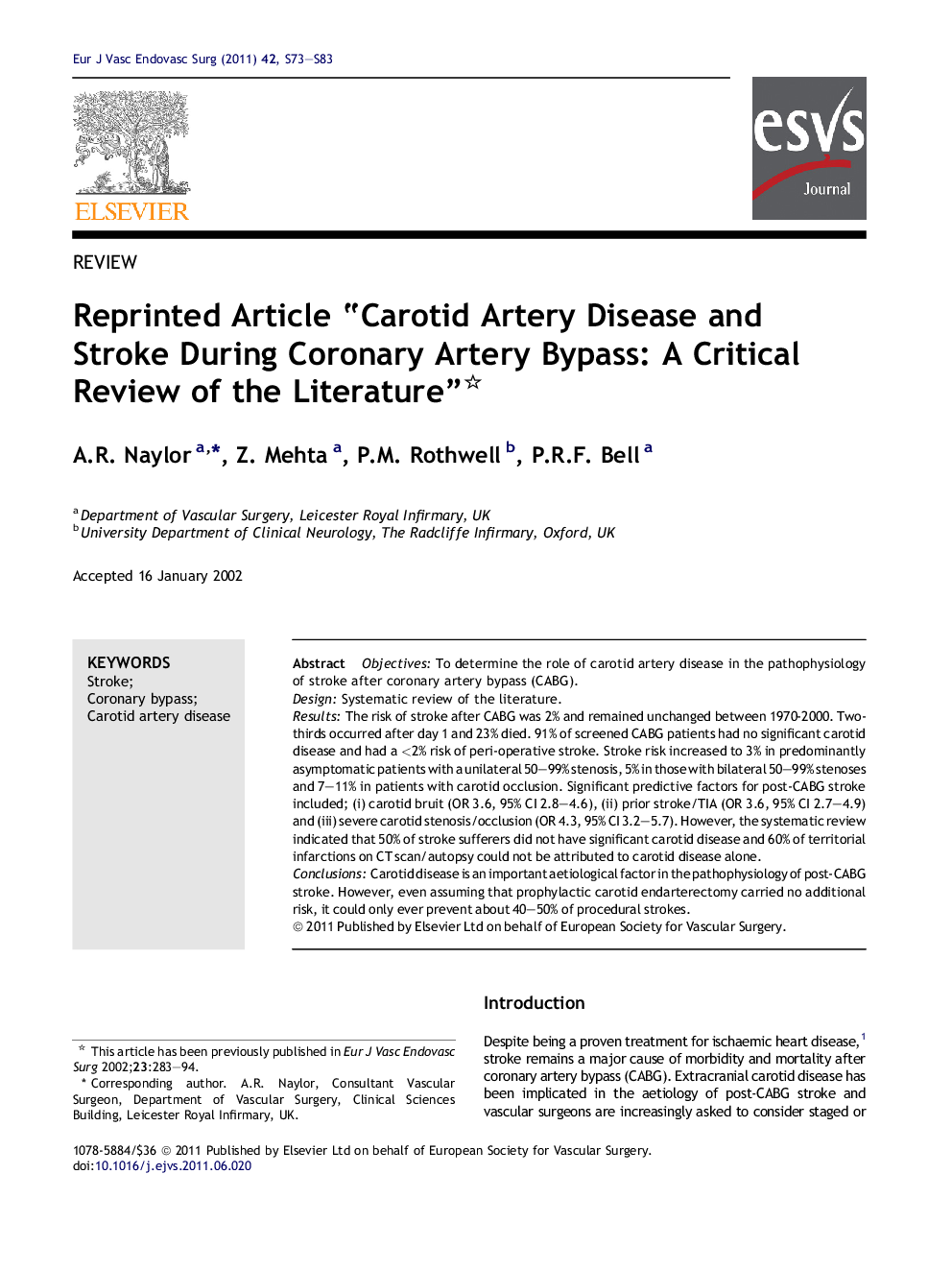| Article ID | Journal | Published Year | Pages | File Type |
|---|---|---|---|---|
| 2913399 | European Journal of Vascular and Endovascular Surgery | 2011 | 11 Pages |
ObjectivesTo determine the role of carotid artery disease in the pathophysiology of stroke after coronary artery bypass (CABG).DesignSystematic review of the literature.ResultsThe risk of stroke after CABG was 2% and remained unchanged between 1970-2000. Two-thirds occurred after day 1 and 23% died. 91% of screened CABG patients had no significant carotid disease and had a <2% risk of peri-operative stroke. Stroke risk increased to 3% in predominantly asymptomatic patients with a unilateral 50–99% stenosis, 5% in those with bilateral 50–99% stenoses and 7–11% in patients with carotid occlusion. Significant predictive factors for post-CABG stroke included; (i) carotid bruit (OR 3.6, 95% CI 2.8–4.6), (ii) prior stroke/TIA (OR 3.6, 95% CI 2.7–4.9) and (iii) severe carotid stenosis/occlusion (OR 4.3, 95% CI 3.2–5.7). However, the systematic review indicated that 50% of stroke sufferers did not have significant carotid disease and 60% of territorial infarctions on CT scan/autopsy could not be attributed to carotid disease alone.ConclusionsCarotid disease is an important aetiological factor in the pathophysiology of post-CABG stroke. However, even assuming that prophylactic carotid endarterectomy carried no additional risk, it could only ever prevent about 40–50% of procedural strokes.
